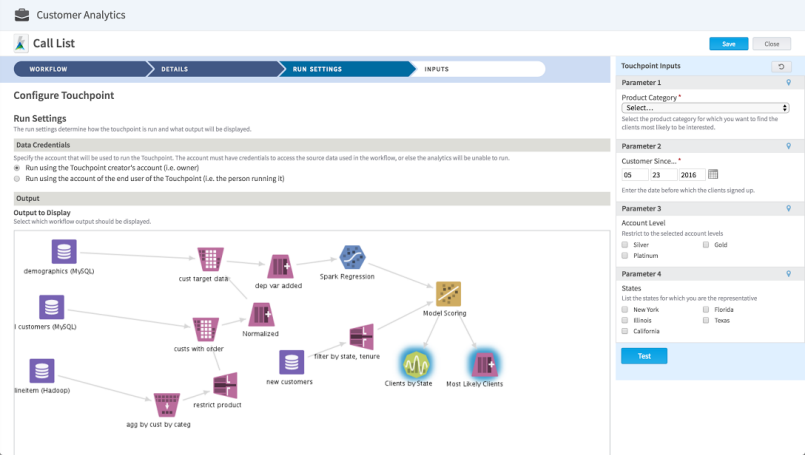 NEWS
NEWS
 NEWS
NEWS
 NEWS
NEWS
Alpine Data Labs is continuing its efforts to bridge the gap between data scientists and the C-suite with release 6.0 of its Chorus analytics platform.
Chorus is a data science and machine learning platform that combines people, datasets and collaborative workspaces. It’s intended to support projects that incorporate elements of data science and end-user programming in a team environment under the supposition that “more than 90 percent of the value in machine learning is created outside the algorithm,” according to Steven Hillion, the company’s chief product officer.
Chorus 6.0 adds new features for user programmability and teamwork. For data scientists, Python integration with Jupyter Notebooks now enables users to create and share documents that contain live code, equations, visualizations and explanatory text. Chorus has also been improved to make it easier to read data from Hadoop clusters and databases into the Python environment.
Saved notebooks now create versions in Chorus, which can be browsed to review, tag and comment upon code changes. Notebooks are now also available alongside traditional assets like trained models, touchpoints and workflows. Workflows can be defined visually and data sets automatically imported into Python (see image above). Notebooks are executed, persisted, and versioned on the server for team collaboration.
“We make it really easy to connect to your Hadoop and relational database clusters from the context of a Python notebook,” said Joshua Lewis, vice president of product at Alpine Data, a five-year-old startup that has raised $23.5 million in two funding rounds, according to Crunchbase.
Chorus provides APIs to quickly pull data from previously configured relational databases and Hadoop clusters. Users can browse data sets and immediately create visualizations. Python scripts are visible and can be managed in Chorus to make it easier to share and audit work.
The new release also adds collaboration and project management capabilities intended to make it easier and clearer to organize teams of people. Workspaces have been redesigned to show the stage that projects are in as teams they work through the transformation, modeling, staging and deployment process. Owners for the project are now visible along with members of the project team and descriptions of their roles and activities.
New natural language processing and collaborative filtering features have also been added along with new transformation operators like “unpivot” and “replace outliers.”
Chorus 6.0 also adds integration with provides a new integration with Trifacta Inc’s self-service data preparation system for data transformation and cleansing. This enables users to more productively discover, structure, clean, enrich, validate and publish data for analysis, the company said.
Touchpoints (see image above), an application services layer that Alpine added last year to enable business users to interact with complex analytic assets and incorporate them into their existing activities, can now be used to operationalize analytic assets into workflows.
Alpine declined to provide pricing information.
THANK YOU